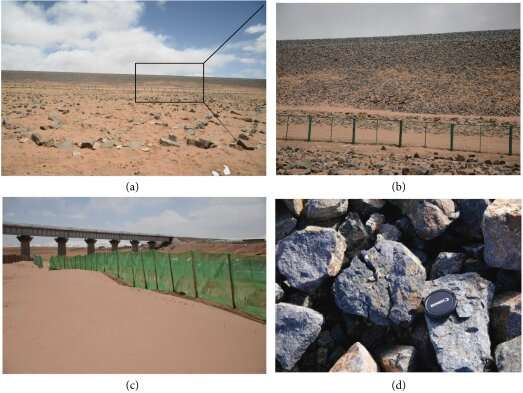New mitigation structure assists in protecting permafrost of Tibet Plateau

In recent decades, climate warming on the Qinghai-Tibet Plateau (QTP) accelerated permafrost warming and has caused permafrost degradation, which decreases the bearing capacity of the permafrost foundation.
A crushed-rock revetment (CRR) with high permeability that can be paved on embankment slopes is widely used to cool and protect the subgrade permafrost. However, traditional CRR over warm permafrost is facing problems that affect its long-term effective cooling performance.
In a study published in Advances in Materials Science and Engineering, a research team from Northwest Institute of Eco-Environment and Resources (NIEER) of the Chinese Academy of Sciences (CAS) designed a new mitigation structure (NMS) to improve the cooling capacity of the CRR and to counter the pore-filling of the rock layer.
Based on the ground temperature observed from 2004 to 2014, the researchers first investigated the cooling characteristics of a selected CRR embankment in a warm permafrost zone. They then developed a coupled-heat-transfer model. A series of numerical simulations were conducted to evaluate the cooling effect and reinforcing performance of the new structure considering climate warming.
The new structure can protect the rock layer on the slopes from sand filling. The NMS can be used as an effective method for roadbed design or maintenance over warm permafrost. It is hoped that this study could improve the use of cold energy in cold regions and provide guidance for the design and maintenance of embankment traversed warm or thaw sensitive permafrost zones.
More information: Minghao Liu et al, A New Mitigation Measure to Counter Thermal Instability of Air-Cooled Embankment in Sandy Permafrost Zones of Tibet Plateau, Advances in Materials Science and Engineering (2021).
Provided by Chinese Academy of Sciences





















